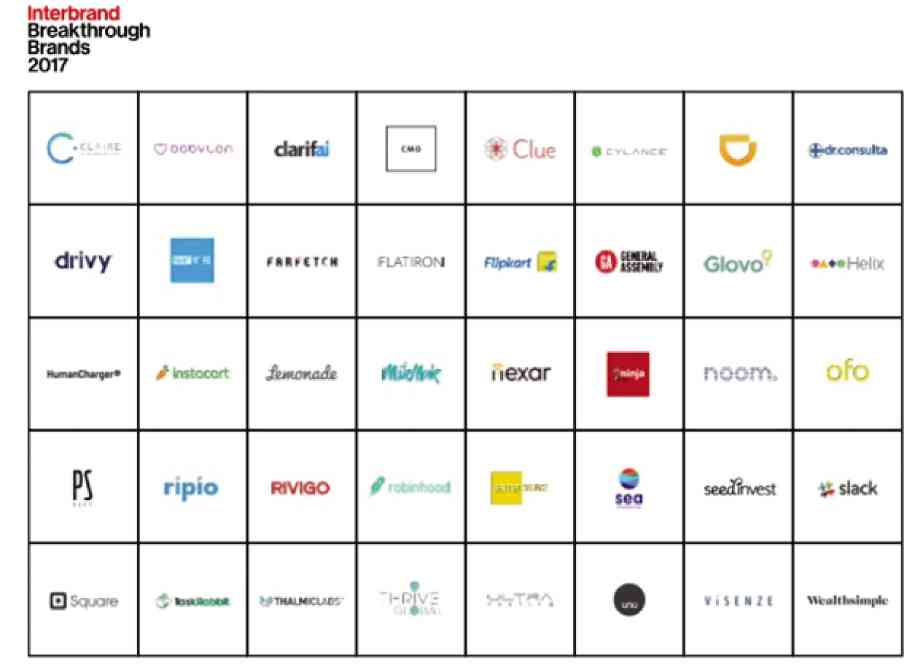
There are moments throughout the life of your business when you enter a new stage of growth—one from which there’s no going back.
We call these breakthrough moments: The point in time when everything changes.
For example, Interbrand Breakthrough Brands, companies that have the potential to become giants, are experiencing some of the initial big breakthroughs.
They are evolving from startups to full-blown businesses. Early breakthrough catalysts include: Injections of funding, sudden exposure, and a rapid increase in volume and market share.
For established brands, breakthrough moments happen when your business is at a crossroads.
The market might make you shift strategies, external pressures could force you to refocus on your core values, or maybe it’s just time for a refresh.
Yet when the moment comes, whether your company is big or small, you need to be thinking about your brand.
When early-stage startups have their initial breakthrough moment, their first question is: How do we hold on to that founding passion and clarity of vision that helped us grow our brand and business in the first place?
Here are some of the key considerations these identified Interbrand Breakthrough Brands need to keep in mind when they enter a new dimension of growth:
Growing into a new mindset
Your business might start as you and a dozen friends working away in a coffee shop, coworking space, or the back of a pub—but suddenly things will start to connect.
You have to make a decisive shift from the early startup mindset, where everyone does everyone’s job. You’ll need to become more organized and specialized, creating structures and hierarchies while keeping hold of your original idea.
Bottom line: You need a clear idea of the purpose and role of brand in your business before both evolve.
Managing stakes and stakeholders
As the CEO of a smaller company, you are generally the person managing relationships with every stakeholder—from investors to suppliers, regulators, etc.
One of the effects of a breakthrough is that you lose that direct connection and feeling of control. Now you have finance managers, marketing managers, and corporate communications people handling those relationships.
The challenge is keeping everyone aligned around the same set of core values when you’re not the only one in the driver’s seat.
Bottom line: Your brand is your culture. The CEO needs to evangelize your brand across the organization.
Dealing with the nitty gritty
Once you “throw open the doors,” so to speak, the amount of detail you have to deal with grows exponentially.
You’ll have customers, suppliers and investors all looking at you to meet their demands and keep their interests in mind. All while you go on the lookout for more funding.
Once you IPO, there’s a whole new flood of governance details and oversight to contend with. No matter how organized you are, if you’re not prepared, you’ll be overwhelmed.
Bottom line: As business complexity increases, don’t lose sight of the simple impact you started with.
So the job of the “breakthrough brand” involves keeping to their core vision while developing the relationships and managing the increased complexity that comes with an explosion of demand.
It’s a formidable challenge, but an exhilarating one.
What makes Interbrand Breakthrough Brands so remarkable is not just that they’re growing, but that they’ve figured out how to hold on to growth. It takes a particular strength, a strength that lies at the heart—in their brands. —CONTRIBUTED

